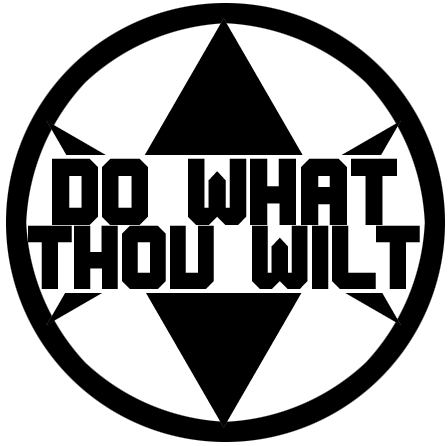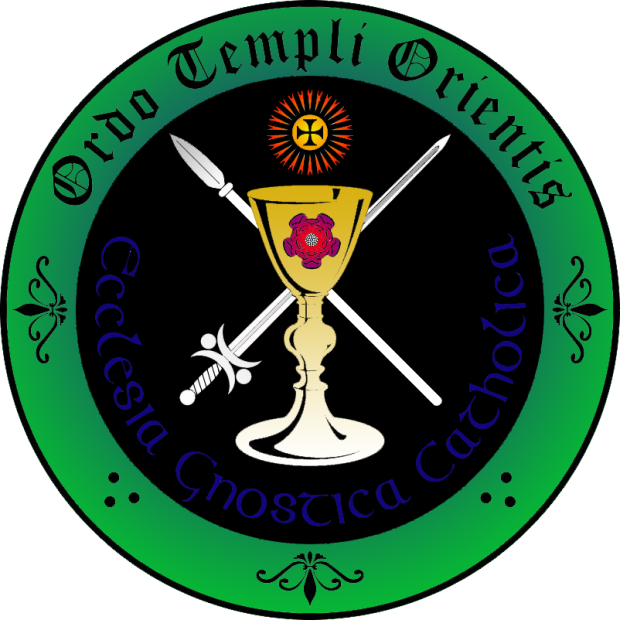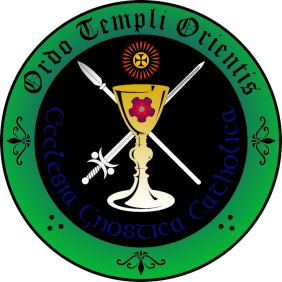
Do what thou wilt shall be the whole of the Law.
Introduction
Liber XV, most commonly known as the Gnostic Mass, is a rich and multi-layered ritual. The Mass has many dimensions, and the more of these perspectives that one sees, the more one can have a deeper appreciation of the ritual. Sometimes individuals seem to get stuck in a single dimension and see, for example, only the dimension that the Mass is a ritual enactment of sex magick and a veiled form of the IX° O.T.O. supreme secret. This is certainly one dimension, but to only see one dimension forecloses on the possibility of seeing the many perspectives that will enrich one’s knowledge, experience, and appreciation of the Mass. Therefore, the purpose of this essay is to discuss certain important dimensions of the Gnostic Mass, although it will not (nor can it be) a completely exhaustive list.
For example: From the dimension of the Hermetic Qabalah, the Priest is in Tiphareth, the Ruach or conscious self, with the surrounding faculties (Chesed/memory, Geburah/volition, Netzach/desire, Hod/reason) being represented by the Deacon. The Priestess is both the Nephesh, the animal soul, as well as the Neschamah, aspiration toward the divine and the influx of divine intelligence/intuition. Qabalistically, the Mass shows the Nephesh (Malkuth; the Virgin Priestess as Earthly) being elevated to the Neshamah (Binah; the High Priestess enthroned as an embodied form of Nuit), and the Ruach (Tiphareth; the Priest as a man among men) being elevated to Chiah (Chokmah; the Priest whose Rod is that which was, and is, and is to come). Their final union releases Yechidah, the supreme individuality of Kether, which communes with the entire Tree down to Malkuth (the Congregants).
This is just one dimension of the Gnostic Mass given as an example. I will now go through several important dimensions of the Mass in a bit more detail to show there are many different perspectives from which to view this ritual.
Celebration of the forces of Nature
If one reads the Mass fairly literally, one sees that it is a celebration of the forces of Nature. Crowley was a proponent of scientific religion that did not flaunt our current knowledge of the world. On this he wrote:
“Human nature demands (in the case of most people) the satisfaction of the religious instinct, and, to very many, this may best be done by ceremonial means. I wished therefore to construct a ritual through which people might enter into ecstasy as they have always done under the influence of appropriate ritual. In recent years, there has been an increasing failure to attain this object, because the established cults shock their intellectual convictions and outrage their common sense. Thus their minds criticize their enthusiasm; they are unable to consummate the union of their individual souls with the universal soul as a bridegroom would be to consummate his marriage if his love were constantly reminded that its assumptions were intellectually absurd.
I resolved that my ritual [the Gnostic Mass] should celebrate the sublimity of the operation of universal forces without introducing disputable metaphysical theories. I would neither make nor imply any statement about nature which would not be endorsed by the most materialistic man of science. On the surface this may sound difficult; but in practice I found it perfectly simple to combine the most rigidly rational conceptions of phenomena with the most exalted and enthusiastic celebration of their sublimity.” (Confessions)
There is a consistent Thelemic cosmology espoused in the Gnostic Mass that is fairly naturalistic. The cosmology is also reflected in many parts of The Book of Lies as they were written in the same year and show very similar views. The universe espoused in the Gnostic Mass is a series of dyads: one might call them “pairs of opposites” but they are not absolutely opposite in many ways, and their function is more to complement and work with one another. Crowley says “the universe [is] enclosed in the law of Lingam-Yoni,” which is another way to say “the law of yin-yang” or simply complementary dyads.
There is an ineffable Lord, Hadit, and an ineffable Lady, Nuit, who are consorts. This is mentioned in the Creed (“one secret and ineffable lord), the Collects (“The Lord” Collect and “The Lady” Collect), and elsewhere. Nuit is Space and Hadit is Motion. Another way to say “motion” is Time, as motion only takes place through the unfolding of time. Therefore, Nuit and Hadit are Space and Time, or simply Space-Time since it is an interwoven continuum. Nuit and Hadit are the foundations that give rise to the potential of a universe.
When manifested in the world, Hadit becomes “Chaos,” the “father of life.” Chaos is the masculine principle in all things, which on the grandest scale is Energy itself, the forces which constitute the universe. When manifested in the world, Nuit becomes “Babalon, “the mother of us all.” Babalon is the feminine principle in all things, which on the grandest scale is Matter itself. Therefore, Chaos and Babalon are the Energy and Matter which constitute the universe. “GOD is concealed in the whirling energy of Nature” (The Book of Lies). We also know that energy and matter are essentially the same thing, so Chaos and Babalon are consorts representing Matter-Energy. “[There is] a seeming duality of Chaos and Babalon; these are called Father and Mother, but it is not so. They are called Brother and Sister, but it is not so. They are called Husband and Wife, but it is not so” (The Book of Lies). As Crowley comments, “Chaos and Babalon… are really one” (The Book of Lies).
Chaos and Babalon are both reflected in the Macrocosm and the Microcosm. In the Macrocosm, the Lord is the Sun and the Lady is the Earth. The Sun is “masculine” insofar as it gives life and light, and the Earth is “feminine” insofar as it conceives and nourishes life. The union of the life- and light-giving powers of the Sun with the conceptive powers of the Earth gives rise to all life.
 Chaos and Babalon reflected into the Microcosm are the Generative Powers in men and women. Hadit says of himself in The Book of the Law, “I am the flame that burns in every heart of man, and in the core of every star. I am Life, and the giver of Life, yet therefore is the knowledge of me the knowledge of death” (AL II:6). “Generative Powers” refers to our life-energy and creative power in general, but especially the power to sexually reproduce. “GOD the Father and Mother is concealed in Generation” (The Book of Lies). The union of Man and Woman give rise to the perpetuation of new life. This is known as the “Phallus,” which is the creative-generative power within each individual regardless of sex. The name goes unspoken or is called Mystery of Mystery in the Gnostic Mass, although the Priest does say “Phalle” in the rending of the Veil. It is called “the essence of every true god that is upon the surface of the Earth” in the Collects.
Chaos and Babalon reflected into the Microcosm are the Generative Powers in men and women. Hadit says of himself in The Book of the Law, “I am the flame that burns in every heart of man, and in the core of every star. I am Life, and the giver of Life, yet therefore is the knowledge of me the knowledge of death” (AL II:6). “Generative Powers” refers to our life-energy and creative power in general, but especially the power to sexually reproduce. “GOD the Father and Mother is concealed in Generation” (The Book of Lies). The union of Man and Woman give rise to the perpetuation of new life. This is known as the “Phallus,” which is the creative-generative power within each individual regardless of sex. The name goes unspoken or is called Mystery of Mystery in the Gnostic Mass, although the Priest does say “Phalle” in the rending of the Veil. It is called “the essence of every true god that is upon the surface of the Earth” in the Collects.
The Generative Power of Man is reflected in the Sacred Lance and that of Woman in the Holy Graal or Chalice. These are the reproductive organs (and their powers) of the male and female, specifically the penis and the womb. The particle represents the Semen or Seed of the Man, and the wine represents the menstruum of the Woman. Therefore, one important dimension of the Gnostic Mass is the celebration of the the process of Generation, the union of complementary powers to perpetuate Life. The Lance and Chalice are used to create the Eucharist, the masculine reflected in the Cake of Light and the feminine reflected in the Wine. The Cake of Light is that which fortifies our bodies (“life”; “sustenance of endeavour”) and the Wine is that which vitalizes our minds (“joy”; “inspiration of endeavour”).
The Path of Initiation
Another dimension of the Gnostic Mass is that it is an enactment of the Path of Initiation. Initiation is the process of “spiritual advancement”; it is called “the process by which a man comes to learn that unknown Crown” (Liber Causae) as well as the path of enlightenment, the path of attainment, and many other names. In other words, the Mass depicts the unfolding of inner transformation.
The Priest represents every individual, the conscious self: he is the one who undergoes the “hero’s journey” in the narrative of the Mass. The other Officers (Priestess, Deacon, and Children) are “part of the PRIEST himself.” This shows that the interaction between the Officers shows an interaction within every individual, reinforcing that the Mass depicts an inner transformation.
The Priest begins asleep in the darkness of ignorance. The rest of the Mass involves his awakening to the Light of Truth. The Priestess represents both the spiritual forces of awakening as well as the object of attainment itself. She can be seen as the Holy Guardian Angel of the Priest. He is “directly inspired from Kether, the ultimate Self, through the Path of the High Priestess, or initiated intuition” (Liber Samekh).
The Priestess descends to the Tomb and rends the veil of darkness “by the power of Iron.” Iron represents Mars or destructive energy, and individuals are often called to the path in response to tragedy, crisis, or suffering in general. “The Aspiration to become a Master is rooted in the Trance of Sorrow” (Little Essays Toward Truth). The Priestess raises the Priest in order to “administer the virtues to the Brethren.” This shows the ultimate goal is to vitalize others, “the Way of Service” (Liber Causae), essentially identical with the bodhisattva vow to attain for the sake of all beings.
The Priest is purified and consecrated in body and soul, and he obtains the Lance, a symbol of spiritual maturity. Crowley wrote, “What then is the formula of the initiation of Horus? It will no longer be that of the Man, through Death. It will be the natural growth of the Child. His experiences will no more be regarded as catastrophic. Their hieroglyph is the Fool: the innocent and impotent Harpocrates Babe becomes the Horus Adult by obtaining the Wand. ‘Der reine Thor’ [the pure fool] seizes the Sacred Lance” (Liber Samekh).
The Priest’s spiritual fire is kindled by his aspiration toward Godhead. Through this, he has the Power to raise the Priestess to the High Altar in the East, which can be seen as the sacralization or spiritualization of the “lower self,” the transformation of the materialization of energy into its more subtle form of Spirit. After purifying and consecrating the now enthroned Priestess, the Priest is cast out into darkness in the dark night of the soul; having set upon the Path, he encounters trials and troubles. Through his aspiration, the Priest invokes Nuit in the Priestess, the ultimate object of desire and union. The Priest invokes Hadit in himself, identifying with the ultimate subject, Life and Motion itself. Finally he invokes Nuit and Hadit’s union, Ra-Hoor-Khuit, the God within who transcends space, time, and causality, who transcends all the gods and even death itself. The complete identification with Him essentially constitutes Attainment.
The veil of darkness is then thrown open, casting light from the High Altar upon the Priest and filling the whole Temple with brilliance. The Priestess is transformed and is now naked, holding the Chalice and Paten, the Godhead that is beyond particular forms with which we commune in Knowledge and Conversation of the Holy Guardian Angel. The Collects are then read, each element of the world being invoked, a perfect, complete, and balanced Microcosm of the Universe. The Priest then consecrates the Cake of Light and the wine with the power of the Lance, turning them into their Divine form, the body and blood of God. These are the elements of the Priest with which he will interact with the world: his body and his spirit. They are prepared as such through the “spiritual power” obtained through the Knowledge and Conversation of his Holy Guardian Angel.
 The Priest then invokes the highest, ineffable Godhead through the Anthem, That which is “I beyond all I am who hast no nature and no name,” “male-female, quintessential, one.” This is the steady aspiration and devotion that propels the Priest to confront the Abyss, the dissolution of self whereby the True Self, that which is one with Godhead, arises. The Priest breaks off a particle, which represents “his Soul, a virgin offering to his Angel, pressed forth from his being by the intensity of this Aspiration” (Liber Samekh). It is the final offering of the self, the draining of one’s blood into the Cup of Babalon, whereby one becomes annihilated and crosses the Abyss. This occurs in the simultaneous “HRILIU,” the orgasm of the spirit wherein Two become One, the dissolution of All into None, and the Priest has thereby become a Master of the Temple.
The Priest then invokes the highest, ineffable Godhead through the Anthem, That which is “I beyond all I am who hast no nature and no name,” “male-female, quintessential, one.” This is the steady aspiration and devotion that propels the Priest to confront the Abyss, the dissolution of self whereby the True Self, that which is one with Godhead, arises. The Priest breaks off a particle, which represents “his Soul, a virgin offering to his Angel, pressed forth from his being by the intensity of this Aspiration” (Liber Samekh). It is the final offering of the self, the draining of one’s blood into the Cup of Babalon, whereby one becomes annihilated and crosses the Abyss. This occurs in the simultaneous “HRILIU,” the orgasm of the spirit wherein Two become One, the dissolution of All into None, and the Priest has thereby become a Master of the Temple.
Then, Baphomet is invoked, the Two-in-One God who is “male-female, quintessential, one,” representing a state of consciousness where opposites are fused into a unity. The Priest turns around to utter his Word. He lowers the Lance, announcing the Law, and the Congregants respond in kind, signifying the descent of this Two-in-One into all parts of the self, the entire Tree of Life from Supernals to Malkuth. This includes the Brethren for whom the Priest has attained in order that he may administer the Virtues to them. The Brethren take part in his Wisdom and Understanding through the Eucharist, and through this they come to recognize the Godhead with themselves. “God manifest in flesh” is their name. After a final blessing, the Priest exhausts his purpose and dies, descending into the darkness of the Tomb that another Priest may arise and the cycle perpetuate through the generations.
Psychological Transformation
Another dimension of the Gnostic Mass is that it represents psychological transformation. The Jungian model of the psyche is especially conducive to being seen reflected in the Mass.
 The Priest represents the conscious self, the sense of subjectivity. This is not confined merely to the ego, the sense of personal identity, but the conscious awareness itself (within which is the ego). The Deacon represents the faculties of the conscious self. The Priestess represents the Unconscious: she is both the earthly, animal, instinctual side as well as the heavenly, divine side. In particular, she seems to be identified at parts with the “anima,” an anthropomorphization of the unconscious mind, and an intermediary between the conscious self and the archetypal Self, the true center of one’s being.
The Priest represents the conscious self, the sense of subjectivity. This is not confined merely to the ego, the sense of personal identity, but the conscious awareness itself (within which is the ego). The Deacon represents the faculties of the conscious self. The Priestess represents the Unconscious: she is both the earthly, animal, instinctual side as well as the heavenly, divine side. In particular, she seems to be identified at parts with the “anima,” an anthropomorphization of the unconscious mind, and an intermediary between the conscious self and the archetypal Self, the true center of one’s being.
The entire Gnostic Mass shows the psychological transformation of the Priest going from an identification with the persona to an identification with the archetypal Self, which encompasses the totality of the psyche, both conscious and unconscious. The entire process may be summarized as: the Priest identifying with Persona → Priest identifying with Ego → encounter with the Shadow → encounter with the Anima → union with the Anima to “release” or access the Self with which the Priest finally identifies.
At the beginning of the Mass, the Priest is in the Tomb representing the darkness and confinement of being identified with the persona, one’s outer personality. The Priestess descends as an unconscious impulse, experienced by the Priest as an appearance or a welling-up of unconscious forces. The Priest is awakened to a self not confined merely to persona, and he becomes identified with the ego.
As the ego, he then exerts his power over his unconscious and habitual instincts, represented as the Priestess kneeling before being upraised. Then, the Priest and the Temple are plunged into darkness as he confronts his “shadow”, those aspects of the self that are denied, repressed, and feared. His aspiration carries him through the darkness, and eventually he rends the veil to be met with an image of his “anima,” the naked Priestess enthroned. The anima is the almost like a reflection in the unconscious of the conscious self, it is the “hidden opposite gender in each individual,” representing a layer of the psyche deeper than the shadow. As Jung wrote, “Every man carries within him the eternal image of woman, not the image of this or that particular woman, but a definite feminine image. This image is fundamentally unconscious, an hereditary factor of primordial origin engraved in the living organic system of the man” (Collected Works vol.17). The “anima” or Priestess acts as mediator between the unconscious (the High Altar and all within the Veil of the Supernals) and the conscious (the Priest).
The Priest and Priestess unite, representing the acceptance and integration of the contrasexual archetype into oneself, i.e. becoming Two-in-One, represented in imagery such as the Alchemical Androgyne or, more aptly, Baphomet. The final proclamation of “There is no part of me that is not of the gods” signifies the emergence of the archetype of the Self, that which contains all elements of the psyche in a unified totality. This is not the same as “mystical union” or samadhi, but a sense of complete unity within one’s own being, the integration of all the parts of oneself into a single whole. Jung defined individuation as:
“becoming an ‘in-dividual,’ and in so far as ‘individuality’ embraces our innermost, last, and incomparable uniqueness, it also implies becoming one’s own self. We could therefore translate individuation as ‘coming to selfhood’ or ‘self-realization…’ Egotists are called ‘selfish,’ but this, naturally, has nothing to do with the concept of ‘Self’ as I am using it here… Individuation, therefore, can only mean a process of psychological development that fulfils the individual qualities given; in other words, it is a process by which a man becomes the definite, unique being he in fact is. In so doing he does not become ‘selfish’ in the ordinary sense of the word, but is merely fulfilling the peculiarity of his nature, and this… is vastly different from egotism or individualism.” (Collected Works vol.7)
In other words, the Priest has immersed himself in the unconscious self stage by stage. He has united by “love under will,” i.e. revealed, accepted, and integrated the various archetypal forces that emerge, and he has become wholly Himself.
The Union of Subject and Object
The Gnostic Mass also contains the dimension of it being a symbolic, ritual reflection of the process of meditation whereby the subject of awareness merges with the object in samadhi.
The Temple represents the field of consciousness itself. The Priest represents the subject of awareness, the sense of “I” or self. The Priestess represents the object of concentration or devotion. The Lance of the Priest represents the power of concentration itself.
Traditionally, the process of concentration culminating in samadhi is called, as a whole, samyama. Samyama has three stages: dharana, dhyana, and samadhi. To oversimplify, dharana is when the subject begins to concentrate on the chosen object: the focus has been narrowed down to that particular object of concentration so that no other object takes the subject’s focus away. Crowley writes, “In the course of our concentration we noticed that the contents of the mind at any moment consisted of two things, and no more: the Object, variable, and the Subject, invariable, or apparently so. By success in Dharana the object has been made as invariable as the subject” (Liber ABA, Part I).
Dhyana is when dharana has been intensified to the point where there is only an awareness of the object, even the awareness of oneself as a subject has faded away. Samadhi is the culmination of dhyana whereby both subject and object “merge” or disappear into a non-dual unity.
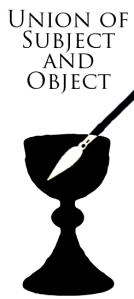 In the Gnostic Mass, the Priest’s Lance is stroked eleven times by the Priestess; this shows the awakening to dharana, the first stage of samyama. This dharana culminates in the Priest kissing the Book on the Priestess’ chest three times and kneeling in adoration. The Priest is then in darkness for three circumambulations of the Temple. This may represent the “darkness” or struggle that often comes when beginning in the practice of samyama. Crowley likens this aspect of the work of samyama (or simply “Yoga”) to the formula of IAO:
In the Gnostic Mass, the Priest’s Lance is stroked eleven times by the Priestess; this shows the awakening to dharana, the first stage of samyama. This dharana culminates in the Priest kissing the Book on the Priestess’ chest three times and kneeling in adoration. The Priest is then in darkness for three circumambulations of the Temple. This may represent the “darkness” or struggle that often comes when beginning in the practice of samyama. Crowley likens this aspect of the work of samyama (or simply “Yoga”) to the formula of IAO:
“In beginning a meditation practice, there is always a quiet pleasure, a gentle natural growth [dharana and the raising up to the High Altar]; one takes a lively interest in the work; it seems easy; one is quite pleased to have started. This stage represents Isis. Sooner or later it is succeeded by depression—the Dark Night of the Soul, an infinite weariness and detestation of the work [the three circumambulations of the darkened Temple]. The simplest and easiest acts become almost impossible to perform. Such impotence fills the mind with apprehension and despair. The intensity of this loathing can hardly be understood by any person who has not experienced it. This is the period of Apophis.” (Magick in Theory & Practice)
By continued concentration, the dharana breaks into dhyana in the piercing of the Veil and the influx of Light from the High Altar. This trance of dhyana continues throughout the Collects.
This dhyana builds slowly through the Consecration of the Elements and the Anthem, and it culminates in the only word spoken simultaneously by Priest and Priestess in the Gnostic Mass: HRILIU. At this moment, both Priest and Priestess hold both Lance and Cup and depress the “particle,” the last bit of separateness, into the Wine so that the two become One in samadhi.
This “Eucharist” of samadhi may be understood as a subtler level of meaning to what Crowley says when he writes, “The highest form of the Eucharist is that in which the Element consecrated is One. It is one substance and not two, not living and not dead, neither liquid nor solid, neither hot nor cold, neither male nor female. This sacrament is secret in every respect” (Magick in Theory & Practice). It is “neither this nor that” because the samadhi is transcendent of dualities – it is non-dual – and it is “secret in every respect” because it is beyond the possibility of communication as all language is inherently dualistic.
Tantric Rite
The Gnostic Mass also contains the dimension of being an enactment of a Tantric rite. There are an immense amount of similarities between Tantra and Thelema, including but not limited to: seeing the body as “good” and useful for attainment, seeing the body as a microcosm of the Universe, seeing the world not as maya or illusion but as the play of the power of Godhead, the visualization of self as Deity, the transcendence of common morality and ethics, et cetera.
In Tantra, there is something called the “Great Ritual” or the “Secret Ritual,” which involves the use of wine (madya) and sexual union (maithuna). Sound familiar? There are “left-hand” Tantrics who actually engage in sexual intercourse and “right-hand” Tantrics who only engage in sexual intercourse symbolically (with sexual union itself being symbolic as well as the visualization of sexual union).
Shiva is the formless, motionless Godhead that is beyond all forms and expression, and Shakti is the Power of that Godhead when expressed in form and motion; it is very similar to the concepts of Tao (Shiva) and of Teh (Shakti). Shakti is often identified with Kundalini, reinforced in the Mass by the Priestess’ 3 and a half circles around the Temple reflecting the Kundalini serpent coiled 3 and a half times around the base of each individual’s spine. Interestingly, Shakti’s symbol is that of a triangle with the apex downward, which is the symbol of Ra-Hoor-Khuit and the sign given by the Priestess when she is first raised to the High Altar. The Priestess becomes not merely a woman but the Absolute Woman when raised to the High Altar, and she becomes Shakti devoid of all particular forms in the stripping away all clothing.
Basically, the yogi identifies with Shiva and all his corresponding properties; the female identifies with Shakti, the primordial Power inherent in all motion. This is similar to the idea of the Scarlet Woman as an earthly avatar of Babalon. Their union is a hieros gamos or “holy marriage”: the union of male and female is seen as the union of Shiva and Shakti, which may be oversimplified as the ultimate Subject and the ultimate Object. This union creates the “androgynous Shiva,” known as Ardhanarishvara, which literally means “the Lord who is half woman.” Ardhanarishvara is essentially a Two-in-One form representing both elements fused into One: nearly identical images are found in that of Baphomet and of the Alchemical Hermaphrodite or “Rebis.”

This suspension of duality occurs during the erotic rapture of union, liberating this “Force” of Ardhanarishvara or Baphomet. This Two-in-One figure transcends all, including space and time: it therefore is That which is the “breath that makest every God even and Death to tremble before Thee.” It is the Lion and Serpent that “destroys the destroyer” of Death, being That which transcends all manifestation, all motion, and all duality. This is the amrita or ambrosia, both words meaning “not mortal” or “beyond death”; this is the true Elixir of Immortality, the sacrament of which one may partake and truly proclaim “There is no part of me that is not of the gods.”
Concluding Remarks
It should be emphasized once more that this list is not exhaustive: there are potentially infinite other dimensions at work in the Gnostic Mass. Also, none of these dimensions that are mentioned are fully fleshed out: one could easily write a whole book on the Gnostic Mass as a Tantric rite, for example. The real point is to emphasize that there are, in fact, many dimensions to the Gnostic Mass. I believe that the more dimensions one can appreciate, the deeper one’s experience and appreciation of the Mass can be. Therefore, I hope that this essay will spark in the reader a desire to see the Gnostic Mass as something beyond merely a Qabalistic drama or a veiled sexual magick ritual. There is a vast reservoir of potential hidden within the central rite of O.T.O., merely waiting for the ingenium and courage of an earnest seeker to tap into it.
Love is the law, love under will.

If you enjoy these writings, please consider pledging $1+ on my Patreon









 We believe that ownership over one’s own body is foundational: we are utterly opposed to any form of slavery or human ownership.
We believe that ownership over one’s own body is foundational: we are utterly opposed to any form of slavery or human ownership.






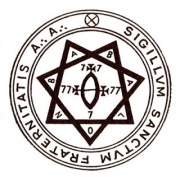


 Chaos and Babalon reflected into the Microcosm are the Generative Powers in men and women. Hadit says of himself in The Book of the Law, “I am the flame that burns in every heart of man, and in the core of every star. I am Life, and the giver of Life, yet therefore is the knowledge of me the knowledge of death” (AL II:6). “Generative Powers” refers to our life-energy and creative power in general, but especially the power to sexually reproduce. “GOD the Father and Mother is concealed in Generation” (The Book of Lies). The union of Man and Woman give rise to the perpetuation of new life. This is known as the “Phallus,” which is the creative-generative power within each individual regardless of sex. The name goes unspoken or is called Mystery of Mystery in the Gnostic Mass, although the Priest does say “Phalle” in the rending of the Veil. It is called “the essence of every true god that is upon the surface of the Earth” in the Collects.
Chaos and Babalon reflected into the Microcosm are the Generative Powers in men and women. Hadit says of himself in The Book of the Law, “I am the flame that burns in every heart of man, and in the core of every star. I am Life, and the giver of Life, yet therefore is the knowledge of me the knowledge of death” (AL II:6). “Generative Powers” refers to our life-energy and creative power in general, but especially the power to sexually reproduce. “GOD the Father and Mother is concealed in Generation” (The Book of Lies). The union of Man and Woman give rise to the perpetuation of new life. This is known as the “Phallus,” which is the creative-generative power within each individual regardless of sex. The name goes unspoken or is called Mystery of Mystery in the Gnostic Mass, although the Priest does say “Phalle” in the rending of the Veil. It is called “the essence of every true god that is upon the surface of the Earth” in the Collects.
 The Priest represents the conscious self, the sense of subjectivity. This is not confined merely to the ego, the sense of personal identity, but the conscious awareness itself (within which is the ego). The Deacon represents the faculties of the conscious self. The Priestess represents the Unconscious: she is both the earthly, animal, instinctual side as well as the heavenly, divine side. In particular, she seems to be identified at parts with the “anima,” an anthropomorphization of the unconscious mind, and an intermediary between the conscious self and the archetypal Self, the true center of one’s being.
The Priest represents the conscious self, the sense of subjectivity. This is not confined merely to the ego, the sense of personal identity, but the conscious awareness itself (within which is the ego). The Deacon represents the faculties of the conscious self. The Priestess represents the Unconscious: she is both the earthly, animal, instinctual side as well as the heavenly, divine side. In particular, she seems to be identified at parts with the “anima,” an anthropomorphization of the unconscious mind, and an intermediary between the conscious self and the archetypal Self, the true center of one’s being. In the Gnostic Mass, the Priest’s Lance is stroked eleven times by the Priestess; this shows the awakening to dharana, the first stage of samyama. This dharana culminates in the Priest kissing the Book on the Priestess’ chest three times and kneeling in adoration. The Priest is then in darkness for three circumambulations of the Temple. This may represent the “darkness” or struggle that often comes when beginning in the practice of samyama. Crowley likens this aspect of the work of samyama (or simply “Yoga”) to the formula of IAO:
In the Gnostic Mass, the Priest’s Lance is stroked eleven times by the Priestess; this shows the awakening to dharana, the first stage of samyama. This dharana culminates in the Priest kissing the Book on the Priestess’ chest three times and kneeling in adoration. The Priest is then in darkness for three circumambulations of the Temple. This may represent the “darkness” or struggle that often comes when beginning in the practice of samyama. Crowley likens this aspect of the work of samyama (or simply “Yoga”) to the formula of IAO:





